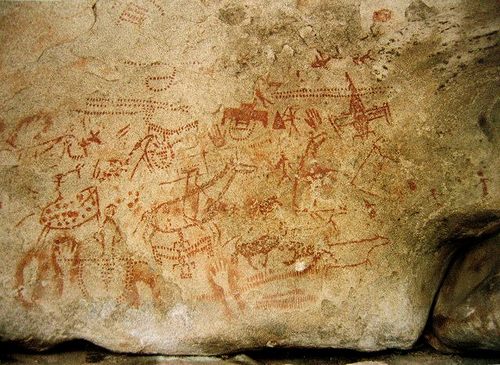The Polychrome Rock Paintings in the Altay Mountains
Wang Binghua
Xinjiang Institute of Archaeology, Urumqi, China
he Altay Mountains, lying across the northern part of Xinjiang, played an important role in connecting Asia and Europe in ancient times. The cultural exchange passing through the Altay is but poorly known and thus merits scholarly investigation. Of particular interest is archaeological evidence, including polychrome rock paintings found in the caves of the Altay that have been reported in various channels in recent decades. These paintings, which provide valuable historical information, are the subject of this article.
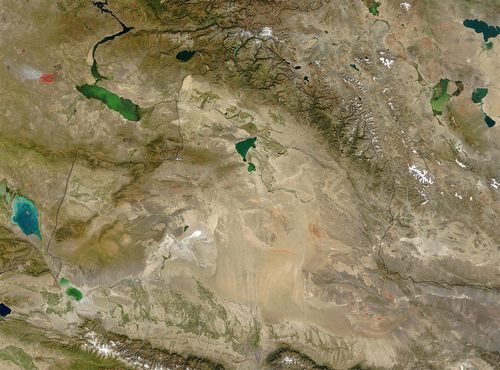
Fig. 1. Northern Xinjiang and neighboring countries, with the Altay
Mountains across the top center and right of picture.
Any kind of primitive culture must be closely associated with the natural environment in which it was created and developed. Before analyzing the rock paintings in the Altay Mountains, it is necessary to know a bit more about the mountains them-selves. The Altay is a vast mountain system in Asia, straddling the administrative borders of four countries: Kazakhstan, China, Mongolia, and Russia (Fig. 1). In the territory of China is the south slope of its middle part, which runs through the northern border of Xinjiang from northwest to southeast, some 800 km in length and 80-150 km in width and with an average altitude of 3,000 m. Above 3,200 m is the glaciated area covered with heavy snow. From 3,200 m to 2,400 m is the high mountain belt of high-altitude pasture, supporting cattle in summer time. From altitude 2,400 m to 1,500 m is the middle mountain belt with good vegetation where there is plenty of rainfall and thus an ideal summer pasture. The low mountain belt, 1,500 m down to 1,000 m high, is a good grazing land in spring and autumn, where hills and gorges alternate and grass flourishes. Below 1,000 m, there are hills and sparse grazing ground. Winter grazing is found in the river valleys up against the mountain slopes and facing the sun. The mountain geography where water supply, vegetation and temperature vary with altitude makes possible a seasonal shift of grazing to provide better survival conditions and has made the Altay a base for the activity of the ancient pastoral nomads. Ever since the Neolithic Period it has provided the ancient nomads an ideal place for development as well as a continental bridge between the West and the East.
Evidence concerning ancient nomadic culture may be seen in abundant petroglyphs, often found in mountain pastures, along important routes of travel, in defiles and so on. Unlike the relatively well-known petroglyphs, which share the same spirit but have different representations and ages, the rock paintings are as yet little known and little studied.
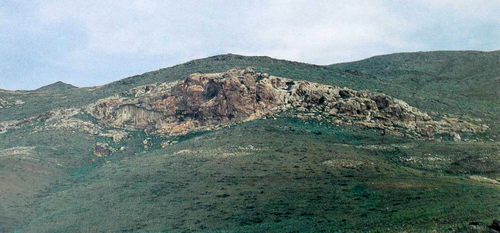
Fig. 2. View toward Cave 1 at Tangbaletas.
It was in the summer of 1965 that I spotted the polychrome rock paintings in
the caves of the Altay Mountains for the first time. As a member of the
archaeological group of the History Research Institute of the Xinjiang
Academy of Sciences, I was then doing archaeological research in the Altay
area with the late Professor Yi Manbai and Mr. Wang Mingzhe. This trip
lasted 5 months and covered thousands of kilometers. The cairns, stone
coffins, deer-shaped steles, stone figures and rock carvings in both
mountain and non-mountain areas were all very impressive. Yet of these rich
cultural remains, the rock paintings made the strongest impression.
According to this incomplete personal research and some reports by
colleagues, there are at least three sites in the Altay Mountains that have
substantial numbers of poly-chrome rock paintings. In the area between the
Haba River in the west and Altay City in the east, there are at least ten
locations where such rock paintings may be seen. And this is only a
preliminary estimate. The three sites with substantial numbers of the
paintings are at Arktas in Altay City, Tangbaletas in Fuyun County, and
Dugat in Haba River County.
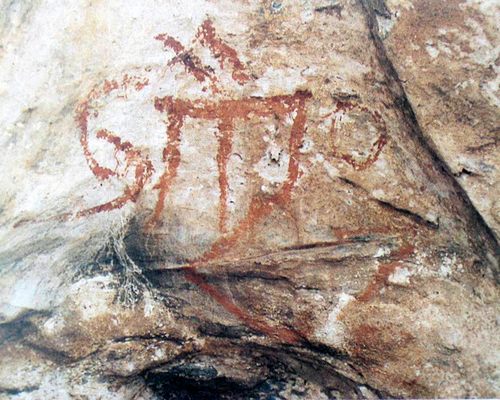
Fig. 3. Painting on roof of Cave 1 at Tangbaletas.
Rock paintings in the caves at Arktas
“Arktas,” which in Turkish means “white rocks,” is about 23 km northwest of Altay City in the township of Balibagai. Geo-graphically, it lies in a long gap in granite rocks at an altitude of 1000m. The cave with rock paintings is a natural shallow groove in the middle part of the granite, 13 m long, 1-4 m deep and 1.3-1.5 m high. The cave faces south onto open grassland, where there is a slowly-flowing brook. In this long narrow granite cave, five groups of paintings may be made out.
1) Near the entrance is an image of vulvae in reddish brown pigment, oval shaped, 16 cm in length and 7 cm in width, with a small hole in the center. Fifty short paralleled lines can be seen above the vulvae; below is a curved line like the contour of a buttock.
2) Further down are four geometric images of human beings, with 40 short parallel lines beside them. The images are 13-17 cm high, all with raised hands and separated legs.
3) At the very end of the cave is a long belt of many short parallel lines, below which is a human image, 16 cm high, with raised hands and separated legs.
4) On the huge rock walls at the entrance are images of five cattle and one horse. The cattle are very stocky and all are in a running posture. The horns of three stretch ahead and the horns of the other two bend backward. The largest of the cattle (86 cm long, 55 cm high) is at the end, the smallest (31 cm long, 23 cm high) at the front. It seems that the painter had good sense of distance and perspective. Below the cattle is a quite skillful depiction of a horse (66 cm long, 40 cm high) with a raised head and running legs. The images were created in a kind of “mixed technique,” since the contours of the cattle and horse were once chiseled and the grooves filled with reddish brown pigment.
5) In addition to these images, on the huge rock walls at the entrance, there is one goat with big horns in reddish brown. The goat stands with high raised head and horns.
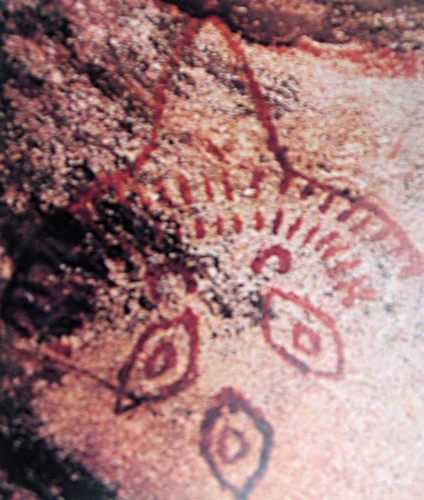
Fig. 4. Painting on roof of Cave 1 at Tangbaletas.
Rock paintings in the caves at Tangbaletas.
“Tangbaletas,” which means “painted rocks” in Turkish, is located in Tangbaletas Village, Kelabulegen Town, 60 km north in Fuyun County (in Kazakh it is called “Keketuhai,” meaning green forest). Two painted caves were found there.
· Cave 1, at the mid-mountainside, 25 m higher than the inhabited village. The cave is high and spacious (20 m wide, 11.5 m high and 11.8 m deep, width gradually contracts down toward the end) and can easily contain dozens of people and not seem crowded. The cave faces southeast, receiving plenty of light, with a view down along a slope covered with thick, verdant grass. The higher location of the cave and the grass-covered slope in front of the cave make it an ideal gathering place for the ancient inhabitants of the area to engage in religious rituals. (Fig. 2)
Rock paintings can be seen at the cave’s top and side walls. On the top, at a distinctive position is a geometric symbol (Fig. 3, next page). The images on the right side look like two human faces with peaked caps. For one ace, there are dense parallel short lines, and below the lines are three diamond-shaped graphics like the Chinese character ping, resembling the eyes and nose. For the other one, there are dense parallel short lines at the position of its chin. (Figs. 4, 5, 6) These two human faces with caps are quite big, one being 72 cm high, the other 170 cm high. On the façade of the cave are 4 giant ovals with smaller circles inside, which are in white or dark purple in contrast to the reddish brown back-ground. The long diameters of the 4 ovals are respectively 70 cm, 80 cm, 49 cm and 120 cm. (Fig. 7, next page). Given the fact that these vulvae-like ovals are big, positioned at the center and are painted in heavy colors, they were probably the main subject of the overall composition. The painting is weird and unique, like sketches lacking any concrete image, the effect being to create a mystical atmosphere. Of religious and shamanic significance, such paintings may help us further understand pre-historic religions. This impression is reinforced by a palm image, with 3 oval images below on the left side of the cave. This image shares the cultural spirit of the other paintings in the cave which may be associated with worship for birthing ability.
· Cave 2, located only 60m away from Cave 1 in the same granite
cluster, is relatively small. Its paintings are simpler than those in Cave
1 — just some drawings of foxes, boars and deer in reddish brown.
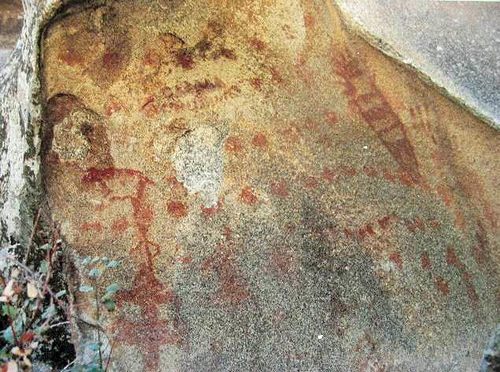
Fig. 5. Painting on roof of Cave 1 at Tangbaletas.
Dugat is in Salbulak Town, Haba River County, where the protruding granite has eroded over the millennia into unique-shaped hills containing strangely-shaped caves resembling honeycombs or dwellings. In contrast below the hills is a totally different landscape of rippling streams and flourishing grass, full of vitality. This unusual environment has a strong visual impact, which is an ideal venue for prehistoric religious rituals. Seven groups of polychrome paintings were found in the caves in these hills.
· Cave 1, a shallow cave with a 1.6 m. wide entrance and 1m high,
contains images of three humans and four cattle outlined in reddish brown
color on the side wall. The human figures are about 30cm high and the length
of the cattle about the same. Two cattle are in moving posture, the other
two are standing head to head.
· Cave 2, a bigger cave, contains a few human images created by
reddish brown dots and lines spread across an area 126 cm high and 130 cm
wide. The upper part shows eight people in two rows with something like
weapons; on one end is a graphic consisting of two rows of parallel vertical
lines. The lower part shows three groups of triangle-like images of
mountains, below which are three men in peaked caps. In between the two
parts is a group of unknown graphics composed of short red lines.
· Cave 3, with a 1.7 m-wide entrance and measuring 1.5 m high and 1.3
m deep, has on its left lower wall a cow painted in reddish brown, below
which is a stout man with a peaked cap, two arms hanging down. On the right
upper wall is a claval [keylike?—ed.] object. In between are many
geometrical graphics, the middle group of which, composed of short lines,
can be identified as a mouth. The rest of the graphics are all in thick dots
and vertical lines, which seem quite unusual and mystic.
· Cave 4, a rather small cave with a 1m high entrance, height of 1 m
and depth of 0.9 m, has a row of stick-like lines painted in dark reddish
brown filling an area of 3-4 cm high and 65 cm long and resembling a fence.
· Cave 5, with a 1 m-high entrance, height of 0.8 m, depth of less
than 1 m, contains two dancing people painted in reddish brown.
· Cave 6, another small cave, with entrance width 1 m, height 0.5 m
and depth 1 m, contains paintings of a man and two cattle. The man is about
26 cm high, with a two-horned head ornament, his arms stretching ahead and
standing splay-footed. Limited by the cave size in the front part, there are
two half-bodied animals’ contours outlined in reddish brown.
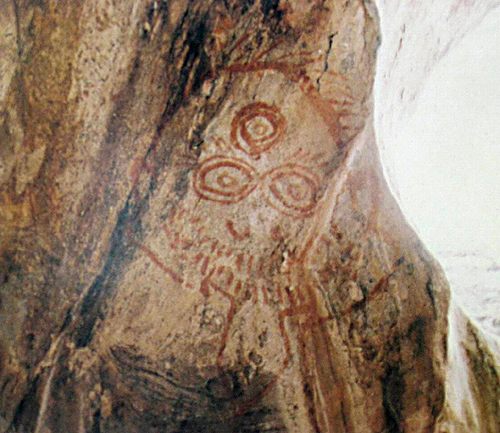
Fig.6. Painting on roof of Cave 1 at Tangbaletas.
The above describes the rock paintings in the caves of Altay area. Apart from those in the Altay Mountains, similar rock paintings have also been found in the Tianshan Mountains and Kunlun Mountains. One case worth mentioning is the Aktas cave located north of Wulezek Village, Terks County, north of the western Tianshan Mountains. The entrance of the cave is 5 m wide, its interior 2.5-3 m high, and its total area 48m2. The paintings in the cave include some horses, sheep, vulvae images, and round graphics painted in reddish brown. On the north side of the Kunlun Mountains, in Pishan County, there is a cave at Arihiwonkul which is 4-5 m high and 4 m deep. Because of its large dimensions, the cave is inhabited by modern nomads. The original reddish brown paintings mostly have been covered by soot; only some graphics and hand prints are dimly visible. On the east side of the Pamirs, painted hand prints have been found at Arzi-gangsaler Village, Qipan Town, Yecheng County. Therefore, we know that rock paintings once spread widely in ancient Xinjiang, but now the better-preserved paintings are found only in the Altay area.
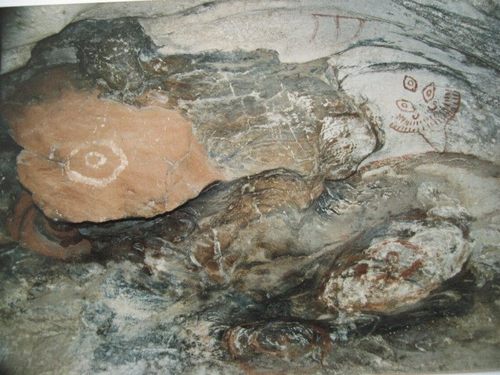
Fig.6. Painting on roof of Cave 1 at Tangbaletas.
How might we interpret the Altay paintings? As we can see from the attached photographs, apart from the clearly identifiable images of animals, human beings, and hand and foot prints, most images are symbolic geometric graphics consisting of parallel lines, ovals, triangles and figures composed of short lines. Those graphics must have meant something to the painters thousands of years ago, although for us the graphics seem to represent myths we need to decode. There seem to be several themes.
1. Worship for birthing ability
On this theme, the typical example is the Arktas rock painting which is simple and almost realistically drawn, enabling us to figure out the painter’s purpose. The curve under the centered vulvae image outlines the buttocks, and the short lines above resembles pubic hair, which also symbolizes pasture land and earth. This can be regarded as an abstract depiction of vulvae, but one not too far from reality. Phallism was common at the primitive stage of human society. And worship for birthing ability was an early form of phallism which represents the primitive people’s religious belief in women’s mystic power of reproduction during the period of matriarchal society. At this early stage of human society when interactive magic was believed in as a means to get divine blessings, primitive people believed that everything had a spirit, and that the reproduction of population was associated with the fertility of earth and the flourishing of pasture. This can be proven by much anthropologic evidence worldwide which shows that childbirth, mothering, earth and life are connected with each other. Therefore, the vulvae image and the curve below it and the short lines above it painted at Arktas actually expressed people’s wish for population reproduction and prayers for abundant harvest and flourishing pastures.
Using the vulvae and grassland image of the
Arktas rock paintings helps us to interpret the Tangbaletas paintings
located not far away from Arktas. The complicated images in this huge cave
are composed of the following 3 components:
· A geometric mark on the top center.
· Four distinctive oval images on the façade wall. These ovals that occupied
the most important position on the wall obviously represent vulvae too.
· Human faces with peaked caps on the top right wall. According to the many
folklore documents, we can infer that those human face images represent
shamans. “Longsha Ji Lue” by Fan Shiji (Qing period) says that “Wizards who
connect with gods are called shamans. They wear caps like funnels.” In the
mind of the ancient Altay nomads, the human faces with funnel-shaped caps in
the rock paintings must have been images of shamans. The belief in shamans
appeared very early among the ancient nomads of northern Eurasia. For the
ancient nomads, they mediated between the visible and spirit worlds. The
nomads believed that through the shamans’ magic, they could be blessed by
gods and obtain their wishes such as reproduction of people and cattle,
escaping diseases and disasters, maintaining peace and safety, etc. As a
result, the images of shamans and vulvae of this cave’s painting show the
aboriginal people’s prayers for their women to have stronger birthing
ability. Shamans had powers different from those of normal people. They were
the medium where gods made their presence. The mysterious caves were then
naturally regarded as the residence of gods, and therefore the ideal place
for magic rituals.
2. Encircled Hunting.
In the life of the ancient nomads, large-scale encircled hunting was an important way of production. In the early days, the target of hunting was normally those big yet clumsy vegetarians like cattle and horses rather than fierce beasts. The painting in Dugat cave is a picture of exactly this kind of hunting: At least 3 bloody cattle lay on the ground, shot by spears; another five cattle and horses remained standing but had been struck by spears and were under attack. Some of the people in this picture hold triangular shields, some hold clubs, some are even disguised as beasts. One should note that there are no bows and arrows in the painting. Around the hunting scene are patterns composed of parallel red lines, arcs and triangles; and many hand and foot prints, which means the victory would belong to the hunters. Except for the small number of geometric figures that we are not able to explain, the theme of the painting is quite clear: it was a record of or a prayer for a successful hunt.
It reflects the same theme as in the hunting scenes of the rock paintings of the Paleolithic Period found in western Europe. The only difference is that the Paleolithic paintings of hunting found in France and Spain are more vivid and objective, while the Altay rock paintings are generally clumsy, their images are mainly line-drawn and in particular the images of animals are quite simple. Moreover, the abstract marks could be regarded as a regional feature of the Altay rock paintings.
3. Social conflicts.
The painting in Dugat Cave No. 2 may reflect the social
conflict at that time and the painter’s celebration for the winning party.
The two groups of people separated by many parallel lines are totally
different in mood and posture. One group has eight people, holding weapons
and looking to be in high spirits. The three people of the other group, two
of them wearing peaked caps, have their arms hanging down and are obviously
in the inferior position. We can feel the painter’s emotions expressed in
the painting regarding whom he supported and for whom he celebrated. Blocked
off by three high mountains and grassland, the two parties could hardly ever
meet.
4. Abstract symbols.
There are a lot of abstract geometric symbols, primarily triangles, parallel lines, fence-like patterns, oval-shaped curves composed of red dashes or semi-circular curves. The curves are not completely closed; all have a gap, which makes them look like traps. Other symbols including claval shapes, dense dots, hand- and footprints, etc. Most of the symbols were drawn with great care and were obviously arranged with some purpose. So far it is it is impossible to decode their meaning and cultural significance, but undoubtedly those symbols were once blessed by magic and in the painter’s view therefore possessed supernatural force.
The Altay paintings are also a precious resource for us to study primitive magic rituals. For primitive peoples, all the important events related to the clan’s survival and development needed to be blessed, and magic was the very way to reach the gods. As a result of extensive scientific observation, the British anthropologist Malinowski concluded that magic is practiced in situations where it causes emotions to oscillate between hope and fear. Primitive people faced challenges which they felt were beyond human control and thus could only be addressed by magic: such things as reproduction of the clan’s population, ensuring a favorable result of hunting, and winning battles against other clans. The Altay rock paintings provide some clues to this kind of logic, even if there is otherwise no written record of it.
Studying the environment of those caves and the content of the rock
paintings, we may conclude the following:
· The place where magic was practiced was also the place where magicians
came into contact with the gods. Those unusual places must be eerie in
appearance and different from normal residences. The painted caves in Altay
which we have found so far are all located in pathless, high and steep
positions, deep and serene, and have odd shapes. For the primitive people,
those caves were no doubt the most mysterious places. And below those caves
there usually is a spacious grassland platform that is suitable for crowds
to gather. Practicing magic at these caves could be more compelling and
overwhelming, for the caves were positioned high up and the people had to
look up to them with awe.
· The practitioners of magic had to rely on shamans to reach the gods.
Shamans were half-human, half-god. Under normal circumstances, they were
humans, but on some specific occasions, they became the avatar of the gods
and the protectors of the clan. The paintings at Tangbaletas portray shamans
in early times with human faces and a peaked cap. Qing scholar Fang Shiji’s
description of northern peoples’ shamans suggests a continuity of culture
going back the earlier primitive beliefs. The presence of shamans in the
paintings seems to suggest that those caves were also where shamans lived.
For shamans to participate, ritual praying had to be carried out there.
· The most common magical practice of primitive people was Induction
Sorcery. It was believed that to poke the enemies’ eyes on a picture or on a
mud figure would blind them and to stab the heart would injure them. The
painted horses and cattle which were the objects of hunting were believed to
interconnect with the real animals. When animals were struck in the
paintings, this would ensure that the actual hunt would be successful.
Subjects like giving birth and defeating enemies depicted in the rock
paintings in the caves of the Altay Mountains are not only a vivid record of
the primitive people’s magic rituals, but also a valuable part of the
cultural history of their society.
· Paintings for use in magic rituals must be in red, the color of blood and
a carrier of life and soul. Painting in the blood color of red could empower
the pictures with inductive magic and thus make people’s wishes come true.
Given the content of the rock paintings, it seems reasonable to date them to
the late Paleolithic Age, as long as 10,000 years ago. This estimate derives
from the cultural features reflected in the paintings which picture a social
life that belonged only to that specific historic period. The life of the
primitive people in the Paleolithic Age was very hard. Collecting and
hunting were their main means of survival. And encircled hunting was a main
form of hunting. As shown in the Dugat painting, the encircled hunting scene
was magnificent, and the activities like trap-setting and throwing spears
must rely on the group’s collaboration. Surrounded by hand prints and mystic
geometric symbols, a herd of cattle and horses has already been trapped. All
the hunters are on foot. The large animals are being killed by spears, not
arrows. The object of the hunt was those vegetarian animals with huge bodies
and a lot of meat, like cattle and horses. Such animals are relatively
harmless, unable to eat man, moving clumsily, and thus easier to hunt. Once
such an animal was caught, it could feed a number of people for several
days. Compared with the hunting scenes of the Paleolithic Age rock paintings
found in France and Spain, there were quite a few similarities. But
age-wise, the Altay rock paintings were a bit later, which explains the
appearance of some abstact graphics.
The second important basis for the proposed dating is that the hunters do not use arrows and bows. The invention and use of arrows and bows was a great achievement of the period of primitive society and a vital indication of the end of the Paleolithic Age and the beginning of the Neolithic Age. In the Altay Mountain area, there are rock carvings at more than 80 sites, and at each site there are anywhere from a dozen to more than one hundred pictures. Hunting activities are a very common subject, and the weapons most used were arrows and bows. Art originated from life. The very different hunting way of the Altay rock paintings reveals that the creator of those paintings still had no idea about arrows and bows: what they knew was to surround the prey by several people and use spears as their weapons. That means they had not yet entered the new Neolithic age.
Just as with the depiction of encircled hunting and the absence of arrows and bows, the evidence of the paintings regarding worship for birthing ability was also a dominant thought of the Paleolithic Age.
There is some additional evidence to support a date in the Paleolithic. The existence of Paleolithic Age human remains in this area is a precondition to the discovery of rock paintings dated 10,000 years ago. Although no Paleolithic remains have yet been discovered in the Altay Mountains within China’s territory due to limited archaeological work in Xinjiang, such remains do exist if we extend to the whole mountain system. A few Paleolithic remains have been found in the Altay Mountains of Russian Siberia, for example the Wulalinka River Paleolithic Age habitation in Alnor-Altest city dating 15,000 years ago, and Stelanaya Paleolithic dwelling cave remains in the Altay Geekiliek Mountain area, etc. These Paleolithic remains provide a basis for us to analyze the rock paintings with the Paleolithic-style culture which we have discovered so far in the Altay area. We note as well that in the territory of the Mongolian Republic, east of Xinjiang, similar reddish brown rock paintings have been found in the caves in the Hoytsaikel River Valley, which is part of the Altay Mountain system. The reports indicate that “The rock paintings were drawn in reddish-brown tone and consisted of 13 groups, distributed on the roof and walls in the cave. The animals’ contours were drawn with pigments; the depictions included oxen, goats, animals with tusks, and birds very much like an ostrich.” Though not all the images are the same as those in the Altay rock paintings in Xinjiang, part of the description (for example “The animals’ contours were drawn with pigments; the depictions included oxen”) is quite similar, suggesting that the Mongolian discoveries would be useful reference material for us to further analyze the rock painting remains at Haba River and Fuyun County in the Altay area.
Therefore, we are quite certain that the polychrome rock paintings in the Xinjiang Altay are remains of the late Paleolithic Age. They are a valuable art legacy that could be traced as far back as 10,000 years ago. This conclusion is significant for the archaeology of Xinjiang where to date we have very limited Paleolithic findings and still lack knowledge of the early civilization of Xinjiang in the primitive period. The paintings themselves are very helpful in studying that Paleolithic culture. What’s more, it’s very likely other remains from the Paleolithic Age will be found nearby. If we follow the clues to carry out focused surveys, we may make a breakthrough in the archaeological research on the Paleolithic Age.
Furthermore, those paintings provide valuable specimens for us to study the thinking patterns, phallic beliefs, magic and hunting activities of the early humans and to understand the creation and feature of primitive art work. The paintings demonstrate that even primitive art creation was driven by substantial need and served a practical purpose connected with gaining material benefit.
Since the nineteenth century in countries of Western Europe such as France and Spain, more than 100 rock-painting sites have been discovered, most of them hidden in the deep end of pathless caves. They depict in reddish-brown or black drawing animals like buffaloes and horses being killed by spears and date from 15,000 - 40,000 years ago. We can see a lot of similarities with the paintings in the Xinjiang Altay. Both there and in the European caves, we see big animals drawn in reddish-brown pigments or outlined by colored lines, and being hunted with spears. Beyond the mere fact of these similarities, we might have here evidence to suggest some connections and communications long ago across Eurasia. Going west from the Altay through the Kazakh hills and Turan lowlands, one can easily reach the European plain. Going east, one can reach the Kobdo area of the Mongolian Republic. The continuous mountains which are transportation barriers today used to be linking bridges for the ancient nomads in ancient times. The Sogdians, Xiongnu, Xianbei, Turks, and Mongolians who once dominated the great prairie had moved around through the inland gateway of Altay. As a result, the Altay Mountains with their rich resources, which stretch all the way from east to west, had long ago become an ideal route for the ancient nomads in the northern Eurasia. This is convincing evidence of the ancient “Silk Road in the Prairie” which had no documented proof but did exist in ancient times. The evidence discussed here is part of the first chapter in the history of the prairie civilization in Eurasia which still lacks in-depth research and thus deserves more attention and efforts by fellow archaeologists.
About the Author
Wang Binghua is one of China's most distinguished archaeologists and the emeritus Director of the Xinjiang Institute of Archaeology. He is an authority on the early history of the peoples of Xinjiang. Among his many publications are:
- (with Wang Minzhe) Wusun yan jiu. Urumqi: Xinjiang renmin chubanshe; Xinjiang xinhua shu dian faxing, 1983.
- The Ancient Corpses of Xinjiang: The Peoples of Ancient Xinjiang and Their Culture, tr. Victor Mair. Urumqi: Xinjiang People’s Publishing House: 2002 (in Chinese and English).
- (with Corinne Debaine-Francfort and Henri Francfort) “Agriculture irrigué et art bouddhique ancien au coeur du Taklamakan (Karadong, Xinjiang, IIe-IVe siècles): premiers resultats de l’Expedition franco-chinoise de la Keriya.” Arts Asiatiques, 49 (1994): 34-52.
- (with Mu Shunying and Christine Kontler-Barbier) “Introduction aux études de Turfan, présentation générale des travaux des spécialistes chinois.” In: Contributions aux Études de Touen-houang, vol.III. Paris: École Française d’Extrême-Orient, 1984, pp. 1-21.
- “New Finds in Turfan Archaeology.” Orientations, 30/4 (1999): 58-64.
- “Recherches historiques préliminaires sur les Saka du Xinjiang ancien.” Arts Asiatiques, 42 (1987): 31-44
